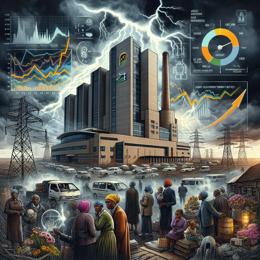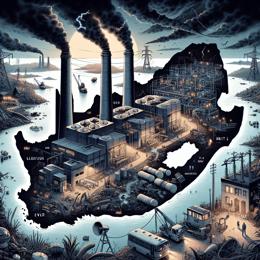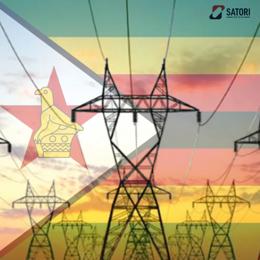Content created by AI
South Africa's 2023 Load Shedding Crisis: A Record Year of Blackouts
Amid the daily struggles and the persistent hum of generators, South Africans endured the bleakest year of electricity supply shortfalls in 2023. The country was enveloped in darkness for over 6700 hours across 335 days due to rolling blackouts, a grave scenario eclipsing the cumulative load shedding experienced over the past 15 years.
Eskom, the state-owned power utility, painted a grim picture of 2023, with South Africans facing unprecedented Stage 6 load shedding – a dire level of interruption indicating a severe shortage of generating capacity. Monitoring insights via EskomSePush app captured the essence of the crisis, highlighting 45 days at Stage 6 and a total of 408,390 minutes without power throughout the year.
This chronic instability of power supply demanded adaptability from residents and businesses. Uninterruptible power supplies (UPS) and generators transitioned from luxury items to necessities for continuity amidst the blackouts. The economic implications rumbled through every sector, with the estimated cost of load shedding soaring to over R12.60 per kilowatt-hour in 2023 terms.
Stark figures emerged from legal battles, as political entities and civil organizations armed themselves with data to enforce accountability from the government. They claimed that the cost of load shedding eclipsed a staggering R1.2 trillion, highlighting the urgency for systematic change.
In monetary terms dedicated to mitigating the power crisis, Eskom disclosed a combined expenditure of R24.4 billion on diesel for their open-cycle gas turbines in 2023 alone. The search for reliable power has cast a large shadow on the national treasury, with escalating expenses and economic knock-on effects.
However, not all news from Eskom is bleak. The utility projected a more positive outlook for 2024, pinning hopes on the three units at the Kusile power station expected to rejoin the grid. This development, coupled with a comprehensive generation recovery plan and the transition to gas at Ankerlig and Gourikwa, breathes tentative optimism into a weary populace.
Energy experts like Lungile Mashele and civil nuclear engineer, Hugo Kruger, acknowledge that poor plant performance, increased industrial demand, and delayed maintenance contributed heavily to the 2023 crisis. Rectifications at Kusile and Koeberg, along with future maintenance improvements, prompt predictions of reduced load shedding severity in the following year.
Meanwhile, energy activist Peter Becker stresses a broader view, pushing for governmental support for the renewable energy sector. The halving of Koeberg's output in the upcoming years is a clarion call for diversifying South Africa's energy portfolio.
In summary, while 2023 will be remembered as the year of incessant blackouts, it has undoubtedly intensified the discourse on the nation's energy future. As South Africa inches towards a potential reprieve from load shedding in 2024, the national focus shifts to sustainability, maintenance culture, and an agile energy strategy encompassing coal, gas, and renewables.










